
Laravel Framework
Directory Structure and Configuration file

What does MVC stand for in software development?
- Model-View-Controller
- Most Valuable Code
- Managed View Components
- Modular-Visual-Creation
What does MVC stand for in software development?
- Model-View-Controller
- Most Valuable Code
- Managed View Components
- Modular-Visual-Creation

Explanation
The Model-View-Controller (MVC) is a design pattern that provides a conceptual framework for organizing the components and responsibilities of a software application. It divides the application into three main components: Model, View, and Controller, each with distinct responsibilities. The main goals of MVC are to decouple components, promote code reusability, and make the application easier to understand and maintain.
Always Remember……
MVC is indeed a broader design pattern that defines the high-level architecture of an application, emphasizing the separation of concerns. However, when implementing the MVC pattern, the actual code is organized into separate layers to achieve modularity, maintainability, and scalability.
What is the primary purpose of the Model in the MVC architecture?
- Handles user interactions and presentation logic
- Represents the data and business logic of the application
- Renders the user interface and displays data
- Manages the communication between the Model and View
What is the primary purpose of the Model in the MVC architecture?
- Handles user interactions and presentation logic
- Represents the data and business logic of the application
- Renders the user interface and displays data
- Manages the communication between the Model and View
What is Laravel?
- A programming language
- A JavaScript library
- A PHP web application framework
- A database management system
What is Laravel?
- A programming language
- A JavaScript library
- A PHP web application framework
- A database management system
Do you know?
Originally, PHP stood for “Personal Home Page,” as it was created to manage Rasmus Lerdorf’s personal website in 1994.
Which command is used to create a new Laravel project using Composer?
- composer create-project laravel/app-name
- composer new laravel/laravel
- laravel new app-name
- composer new-project laravel/laravel
Which command is used to create a new Laravel project using Composer?
- composer create-project Laravel app-name
- composer new laravel/laravel
- laravel new app-name
- composer new-project laravel/laravel
What is Eloquent in Laravel?
- A templating engine
- A database management system
- A PHP extension for performance optimization
- An ORM (Object-Relational Mapping) for database interactions
What is Eloquent in Laravel?
- A templating engine
- A database management system
- A PHP extension for performance optimization
- An ORM (Object-Relational Mapping) for database interactions
Explanation
ORMs maps the objects to database tables, thereby enabling developers to work with their preferred object-oriented paradigm without worrying about the underlying database structure.

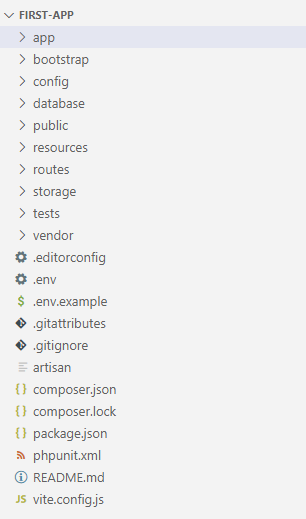
Directory Structure
The default Laravel application structure is intended to provide a great starting point for both large and small applications. But you are free to organize your application however you like.
The App Directory

App -> Http
This directory houses the controllers, middleware, and form requests. Controllers handle HTTP requests and responses, middleware provides a way to filter incoming HTTP requests, and form requests handle form validation logic.
App -> Console Directory
The Console directory contains the command-line commands that you can define for your application using Laravel’s Artisan CLI.
App -> Exceptions
This directory holds custom exception classes to handle specific exceptions in your application.
App -> Models
In this directory, you define the Eloquent ORM models. Eloquent is Laravel’s built- in ORM that allows you to interact with the database using an expressive syntax.
Do you know ?
Laravel drew inspiration from several other frameworks, including Ruby on Rails, ASP.NET MVC, and Sinatra. It combines the best features from these frameworks and adds its own unique elements.
The Bootstrap Directory

The bootstrap directory contains files responsible for bootstrapping the Laravel application.
- app.php: This file loads the basic application configuration and
creates an instance of the Laravel application.
- cache: The cache directory contains compiled service container and configuration files. These files improve the application’s performance by reducing the bootstrapping time.
In a standard Laravel project, which directory contains the main application logic and business-specific code?
- resources
- public
- app
- database
In a standard Laravel project, which directory contains the main application logic and business-specific code?
- resources
- public
- app
- database
Config Directory

The config directory houses various configuration files for different components of the Laravel application. You can customize settings like database connections, application settings, cache configurations, and more from these files.
Database Directory
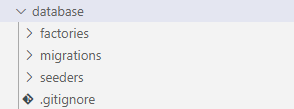
The database directory contains database-related files, including migrations, seeds, and factories.
Database -> Factories
Factory classes are used to define data blueprints that can be used to create dummy data for testing.
Database -> Migration
Migrations are version control for your database. They allow you to modify the database schema and keep it in sync with your application code.
Database -> Seeds
Seed classes allow you to populate your database with sample data for testing or initial setup.
In Laravel, where do you define the database schema and migrations for creating and modifying database tables?
- resources/views
- app
- database/migrations
- config
Public Directory
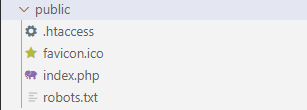
The public directory is the web server’s document root. It contains the index.php file, which is the entry point for all HTTP requests.
Which directory is used for storing publicly accessible assets such as images, stylesheets, and JavaScript files?
- resources
- public
- storage
- app
Which directory is used for storing publicly accessible assets such as images, stylesheets, and JavaScript files?
- resources
- public
- storage
- app
Resource Directory

The resources directory contains the views, language files, and assets (CSS, JavaScript, and images) for the application.
- Views: The views directory stores Blade templates that define the UI of the application.
- Lang: The lang directory holds language files for localization and internationalization purposes.
- Assets: The assets directory contains raw CSS, JavaScript, and other assets. These assets are usually compiled and optimized using Laravel Mix.
Do you Know?
It takes less than a second (0.9 seconds to be precise) for users to form their opinions on their initial visit to a web page.
Routes Directory
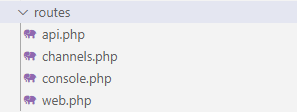
The routes directory contains route definition files.
- web.php: This file contains routes that are typically associated with web-based user interfaces.
- api.php: This file contains routes for API endpoints, usually meant to return JSON responses.
Storage Directory

The storage directory holds various files generated by the application, such as logs, cache, sessions, and uploaded files.
Test Directory
The tests directory contains test cases for the application.
Vendor Directory
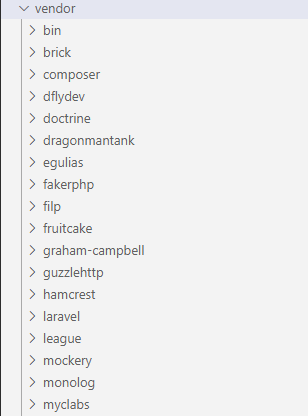
The vendor directory houses all the third-party dependencies installed via Composer, including Laravel itself.
.env file
The environment configuration file for the application.
In every Laravel project, you will have two files, composer.json and composer.lock. What is the difference between them?
In composer.json you specify what packages should be installed, and with what versions.
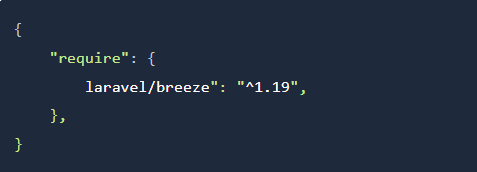
Now, which exact version is installed at any moment? Here comes the composer.lock file.
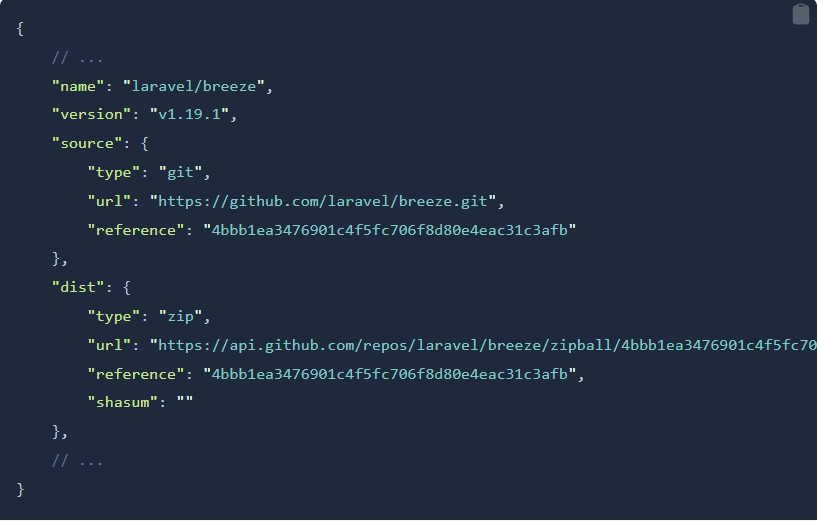
Do you know?
“Source code affects search engine ranking”
Which directory contains the views (templates) used for rendering HTML pages in Laravel?
- resources
- public
- app
- routes
Which directory contains the views (templates) used for rendering HTML pages in Laravel?
- resources
- public
- app
- routes
Which directory is used for storing files generated by the application, such as logs, cache, and session data?
- resources
- public
- storage
- config
Which directory is used for storing files generated by the application, such as logs, cache, and session data?
- resources
- public
- storage
- config
[pdf_note link=”https://drive.google.com/file/d/19h2EAyarxd5ffIiYxH2ukdlbMtimb9mz/view”]